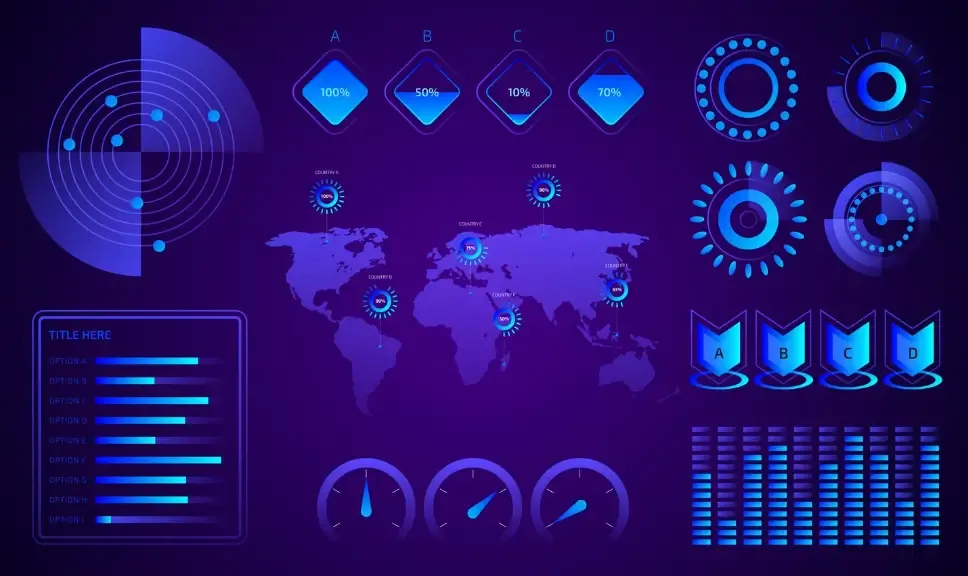How Online IP Lookup Works: From Address to Location
In the digital age, IP lookup has become a commonly used tool for many people. Whether for cross-border e-commerce, social media matrix operations, website operators, or cybersecurity professionals,
simply entering an IP address allows one to immediately see the corresponding country, province, city, and even latitude and longitude.
Many people are concerned about why it is sometimes accurate and other times not. Next, let me reveal the entire process of online IP query from address to geographic coordinates.

One,IP information queryThe working principle: the mapping process from digital to geographic.
An IP address is simply a "doorplate" for network communication and does not directly contain geographical information.
Converting an IP address to geographic coordinates relies on the综合作用 of multi-layered data and algorithms.
1. Register a database (WHOIS information)
Each IP segment is registered with international or regional internet registries (such as APNIC, ARIN) at the time of allocation, including information such as country, city, and operator.
Online IP query websites will prioritize obtaining data from these databases, which are the most authoritative and fundamental sources for positioning.
2. Routing and Network Topology Analysis
Some services determine the physical transmission path of packets by analyzing the routing path of IP (such as traceroute or BGP information), thereby inferring their approximate geographical range.
Such technologies can provide auxiliary evidence when the information in the database is ambiguous.
3. Actual Measurement and Crowdsourced Verification
Some professional IP geolocation services use methods such as latency testing, CDN node feedback, and user geotagging to continuously update their databases, thereby gradually improving the accuracy of IP geolocation.
This is why different websites querying the same IP might yield slightly different results.
II. Accuracy and Limitations of IP Geolocation
Although the results of online IP querying appear to be "precise to the latitude and longitude," their accuracy is often limited in reality.
The stability at the national and provincial levels can reach over 95%.
City-level accuracy depends on the distribution of nodes by operators and the quality of the database.
Street or building level accuracy is almost impossible to achieve through IP alone.
Common causes of deviation include:
Use VPN, proxy, or NAT network;
Dynamic IP allocation in mobile networks;
Sharing an exit IP leads to multiple users appearing in the same location.
Three,ToDetect browser fingerprint detectionMake recognition smarter.
It is difficult to accurately identify user identity or devices based solely on IP addresses, which is why ToDetect's browser fingerprinting technology becomes particularly important.
By analyzing browser and device features (such as operating system, fonts, plugins, screen resolution, etc.), it generates a unique "fingerprint" for each visitor, which works more effectively when combined with IP information.
Precision identification device: Whether the user changes networks or switches VPNs, it can assist in determining whether it is the same device.
Enhance security and risk control capabilities: Used to prevent fraud and bulk registration in login, payment, or comment systems.
Supplementing insufficient IP location: When the IP is hidden or shared, fingerprinting information can fill in the geographic identification blind spots.
The dual identification mechanism of "IP + fingerprint" has become the mainstream solution in e-commerce, finance, advertising, and security protection.
IV. Common Hot Issues Analysis for Online IP Query (FAQ)
Can an IP address reveal a specific home address?
No. Ordinary online IP query tools can only pinpoint to the city or district level, while specific streets or addresses require carrier-level data or user-authorized data.
2. What is the difference between static IP and dynamic IP?
Static IP: Long-term allocation to the same device, stable location.
Dynamic IP: The operator changes it regularly, and the location may change over time.
This is also the reason why many people find that "the IP location checked yesterday and today is different."
3. How to prevent being IP tracked or located?
You can use a trusted VPN, disable browser location authorization, or use detection tools like ToDetect that have privacy management features to reduce the risk of data exposure.
4. What are some common free online IP lookup tools?
There are various free tools available on the market. It is recommended to choose an API service that supports real-time updates and includes geographic coordinates, and to review its privacy policy to avoid data misuse.
Summary and Practical Advice
The essence of IP querying is based on database matching and the inferred results of network analysis. To achieve more accurate data localization, you can:
Choose a reliable IP geolocation database.
Combining ToDetect browser fingerprint detection technology;
Respect and protect user privacy, and comply with data regulations.
With the evolution of the internet, IP positioning and fingerprint recognition will become increasingly intelligent.
Understanding its principles can not only help you enhance website security and user recognition capabilities, but also better protect personal privacy in the online world.



